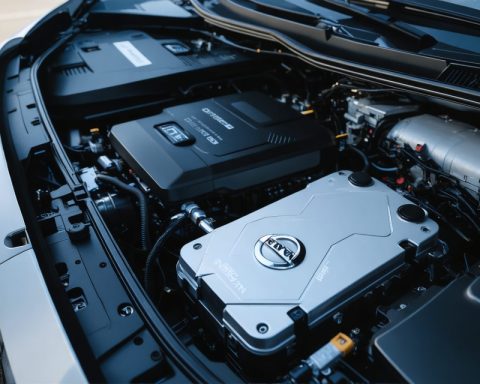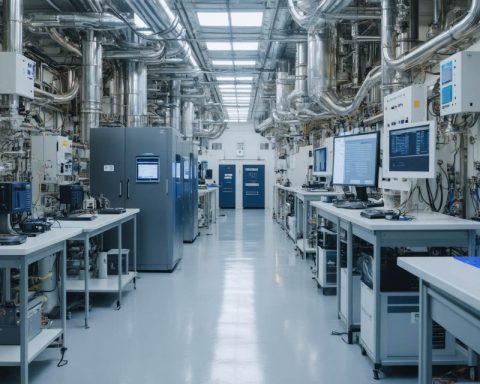The US Treasury has unveiled its long-awaited final rules for clean hydrogen production, offering a golden opportunity for producers eager to tap into the lucrative clean hydrogen production tax credit, which can reach up to $3 per kilogram.
This groundbreaking announcement has led to a surge in nuclear energy stocks, as many companies previously hesitated to invest in hydrogen initiatives due to a lack of clear guidelines. Investors have taken note, signaling a potential boom in the clean hydrogen market.
The hydrogen tax credit is structured to provide financial incentives ranging from $0.60 to $3 per kilogram, depending on the carbon emissions associated with production. This initiative is a pivotal component of the Inflation Reduction Act, championed by President Biden and signed into law in 2022.
Importantly, the new regulations have opened the door for nuclear power and natural gas producers to obtain substantial credits for their hydrogen production efforts, which could lead to a multimillion-dollar influx of investments.
Traditionally, producing clean hydrogen through renewable sources has been more expensive compared to conventional methods. The establishment of this tax credit is aimed at decreasing production costs, thereby encouraging companies to invest in and expand clean hydrogen infrastructure.
In summary, these final rules not only clarify the pathway for producers but also enhance the potential for significant growth within the clean hydrogen sector.
Unlocking Clean Energy: The New Clean Hydrogen Production Tax Credit
Overview of the Clean Hydrogen Production Tax Credit
The US Treasury’s recently issued final rules for clean hydrogen production mark a significant milestone in the development of the clean energy sector. This new framework offers producers the chance to benefit from a clean hydrogen production tax credit that can reach up to $3 per kilogram, depending on the carbon emissions involved in the production process.
How the Tax Credit Works
The hydrogen tax credit is designed to provide financial incentives based on the carbon footprint of hydrogen production, with structured benefits as follows:
– $0.60 per kilogram for hydrogen with the highest carbon emissions.
– Up to $3 per kilogram for hydrogen produced with minimal or no carbon emissions.
This incentivization aligns with the goals of the Inflation Reduction Act, advocated by President Biden and enacted in 2022, aimed at reducing greenhouse gas emissions and promoting clean energy technologies.
Pros and Cons of the Clean Hydrogen Initiative
Pros:
– Significant Financial Support: Producers can receive substantial tax credits, fostering investments in clean hydrogen technologies.
– Nuclear Energy Boost: The new rules also support nuclear and natural gas producers, leading to increased interest and investment in this clean energy source.
– Market Potential: Analysts predict a substantial expansion in the clean hydrogen market due to clarified regulations, encouraging further research and innovation.
Cons:
– Cost of Production: The initial investment in clean hydrogen production infrastructure remains high, which might deter some smaller companies from entering the market.
– Dependence on Policy: The viability of the tax credits depends heavily on future government policies and support, which may change with shifting political landscapes.
Key Features of the New Rules
1. Clear Guidelines: The regulations provide a well-defined pathway for producers to qualify for the tax credits.
2. Support for Diverse Energy Sources: Both renewable and traditional energy sources, such as nuclear and natural gas, can engage in clean hydrogen production under the new rules.
3. Potential for Job Creation: As the industry expands, the clean hydrogen sector may lead to the creation of new jobs in various fields, from production to research and development.
Use Cases for Clean Hydrogen
– Energy Storage: Clean hydrogen can serve as a storage medium for excess renewable energy, helping to balance supply and demand.
– Transportation: Hydrogen fuel cells can power vehicles, providing a low-emission alternative to traditional fossil fuels.
– Industrial Applications: It can replace fossil fuels in industries like steel production, significantly reducing carbon emissions.
Limitations and Challenges
While the new tax credit offers great potential, there are challenges that producers may face:
– Infrastructure Development: Significant investment is needed to develop the infrastructure necessary for widespread hydrogen production and distribution.
– Public Perception: The success of this initiative will depend on public acceptance and understanding of hydrogen as a clean energy source.
Market Trends and Predictions
With the introduction of the clean hydrogen production tax credit, analysts forecast a surge in investment and innovation in the sector. The market is expected to grow rapidly, with predictions of new partnerships forming between traditional energy companies and renewable energy innovators.
Conclusion
The final rules for clean hydrogen production are set to reshape the landscape of the energy market in the United States. By providing robust financial incentives and encouraging diverse energy sources to participate, the new regulations could lead to unprecedented growth in the clean hydrogen sector, positioning it as a cornerstone of America’s clean energy future.
For more information on clean energy innovations, visit Energy.gov.














